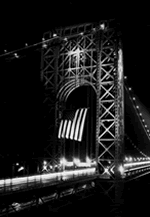Annual Report 2001
Page 2
In April 1921, twenty-five architects, engineers, contractors and "labor men" met in the office of world-renowned architect Robert D. Kohn. These men were concerned that the building and construction industry was disorganized. They left that meeting with the goal of creating an organization of owners, bankers, architects, engineers, contractors, subcontractors, manufacturers, suppliers and labor representatives. In the words of Mr. Kohn: "We started out with the idea that the only hope for effective improvement in the industry was to render through cooperation of all of its elements some measure of service which the public had the right to demand of us.” Out of this meeting was born the New York Building Congress.
Throughout its illustrious history, the Building Congress has served as a forum for issues that affect all segments of the building community. In forging dedicated alliances to discuss and act upon a common agenda, the Building Congress has drawn upon the talents of the best and the brightest in the industry.
From the depths of the Great Depression, and periods of preparing for and enduring war, to the building booms of the 1960’s and late 1990’s, the Building Congress has focused its energies on the issues of the day while helping to keep the industry, government and all New Yorkers focused on the future.
Perhaps the most remarkable aspect of the Building Congress is the constancy of its mission.The very principles upon which the organization was founded are as relevant today as they were 80 years ago. Within a diverse industry, the Building Congress continues to be looked upon as a place where leaders from all sectors can analyze issues of common interest and, when appropriate, act as one. As such, the Building Congress remains a major voice of the industry, and its advice on a range of topics is sought by public officials and agency leaders.
 Since its founding, the Building Congress has served as a productive forum for those entrusted with building New York City. Over the years, the Building Congress has attracted such notable public officials as former President Gerald R. Ford; Senators Baker, D’Amato, Moynihan and Schumer; Mayors Lindsay, Wagner, Beame, Koch, Dinkins and Giuliani; and Governors Carey, Rockefeller and Pataki. The business and labor community also has been well represented, including such luminaries as David Rockefeller, Harry Van Arsdale and Donald Trump.
Since its founding, the Building Congress has served as a productive forum for those entrusted with building New York City. Over the years, the Building Congress has attracted such notable public officials as former President Gerald R. Ford; Senators Baker, D’Amato, Moynihan and Schumer; Mayors Lindsay, Wagner, Beame, Koch, Dinkins and Giuliani; and Governors Carey, Rockefeller and Pataki. The business and labor community also has been well represented, including such luminaries as David Rockefeller, Harry Van Arsdale and Donald Trump.
While its founders would not have recognized the term, "networking" has been another constant for the Building Congress throughout its existence. The Annual Golf and Tennis Outing, established in 1930, remains a tradition in which industry leaders, colleagues and friends relax for a day of sun, fun and recreation. Another traditional social event was the Fun & Frolic Show, first produced in December, 1938. While the show is no longer part of the Building Congress calendar, it has been replaced by two major annual events – the Anniversary Leadership Awards Luncheon and Industry Recognition Dinner – which, combined, attract more than 2,000 people each year and always honor industry champions.
As the content of this annual report attests, the Building Congress remains an industry-directed organization. Its committees, task forces and events are designed to involve all sectors of the building community in the creation of an agenda that addresses common interests and concerns.
Thanks in large part to the women and men of the design, construction and real estate professions, New York City has grown by leaps and bounds over the past 80 years. So too has the building community. This growth and the challenges it presents, combined with the modernization and globalization of the industry, serves only to intensify the need for a devoted and active congress of architects, engineers, skilled labor, contractors, real estate managers and other professionals. The Building Congress remains committed to its role as a conduit for all sectors of the industry and looks forward to many successful and productive years ahead.



